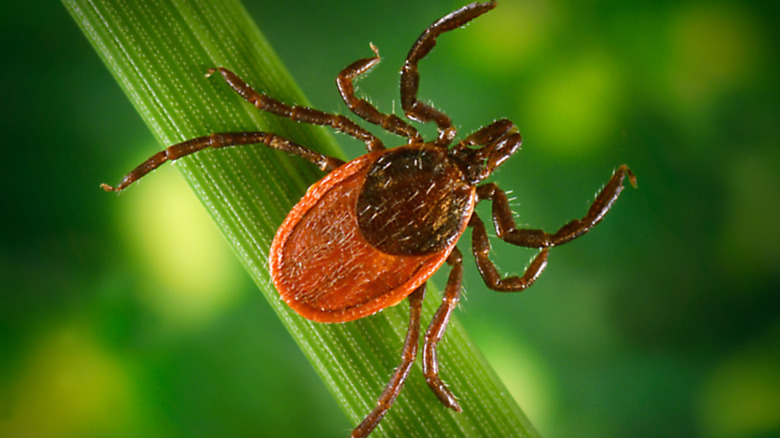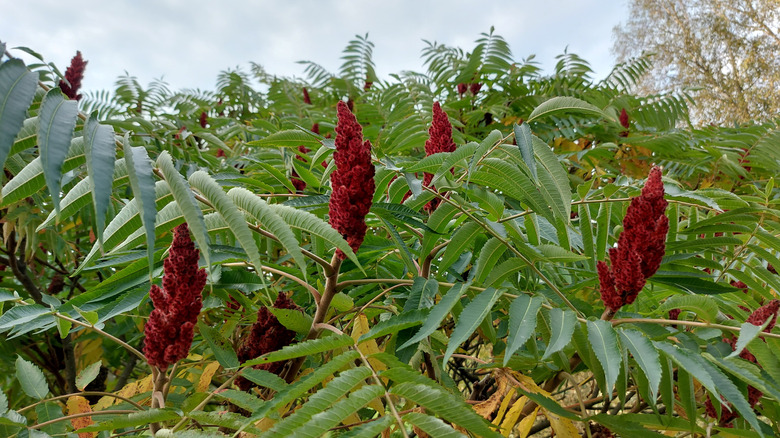The Beautiful Flowering Plant That Could Be Inviting Ticks Into Your Yard
Rosemary, wormwood, and lavender are all plants known to deter ticks around your home and garden. While it is always a good idea to incorporate key tips for keeping ticks out of your yard, it is equally important to avoid certain plants that may bring more ticks into your outdoor space. Ticks like hiding in tall grass so they can easily attach to a host that walks by. These parasites can also enter your property via animal hosts that come into contact with your plants. For example, a deer, carrying ticks on its body, could stop by your garden to eat staghorn sumac (Rhus typhina).
Known for their tall height and beautiful red fruit, staghorn sumac is a deciduous plant that is native to North America. While you might spot the plant growing naturally along the edges of roads, rivers, streams, and woodlands, some homeowners also choose to grow staghorn sumac. It is not only beneficial for a variety of pollinating species, but it also grows quickly. Aside from its berry-like fruit, staghorn sumac puts on a show during other times of the year when it's not bearing fruit. You will see a beautiful white flower in the spring and then yellow, orange, and red foliage in the fall. It's not just humans and pollinators that appreciate staghorn sumac, though. You should also be aware of ticks that hide out in these plants when they are indirectly brought in by host animals.
Deer can bring ticks to your yard when they eat staghorn sumac
Staghorn sumac can be enjoyed by a variety of species, including songbirds, butterflies, and turkeys. It is a fresh-smelling plant that can even bring mourning doves to your yard. White-tailed deer also love to eat this plant. Both the stems and fruit are important sources of sustenance in the winter when other plants may be scarce. While it can be an amazing experience watching deer in your backyard, these animals are also notorious for carrying ticks. Deer are especially known for carrying black-legged ticks, which is where the origin of the nickname "deer tick" comes from. These types of ticks can also target other mammals and birds.
If you have been battling ticks around your home, you might want to reconsider planting staghorn sumac. While ticks can still make their way onto your property, you may notice less parasitic activity if your plants are unappealing to deer. It is also worth noting that while staghorn sumac can be grown in USDA hardiness zones 3 to 9, the plant is not particularly suitable for gardens and smaller yards due to its ability to rapidly spread and take over other plants. These are all good reasons why you should avoid this fascinating but sometimes problematic plant. You might also want to think twice about adding other deer-attractive plants to your garden for extra protection against ticks.

